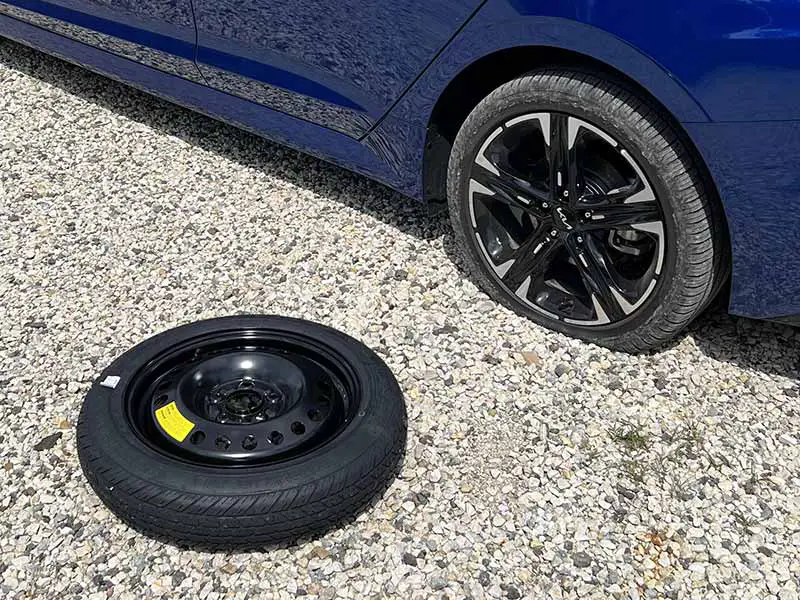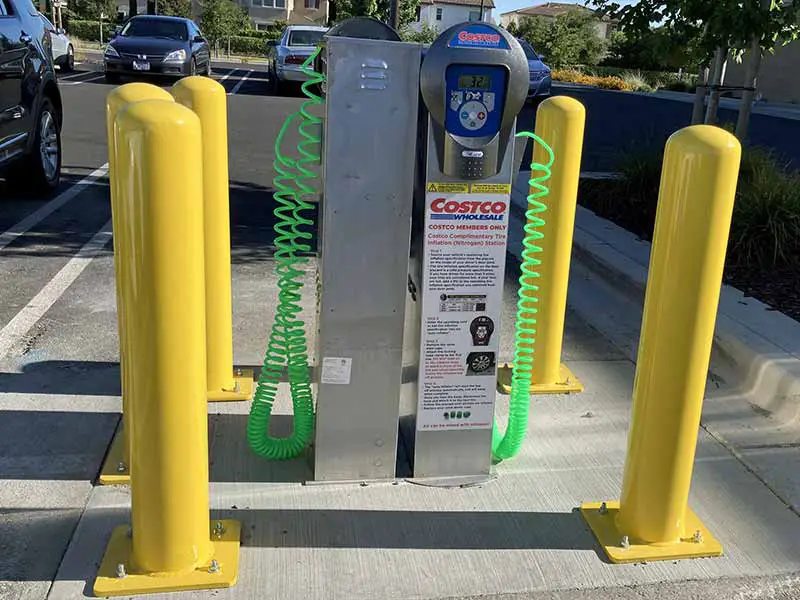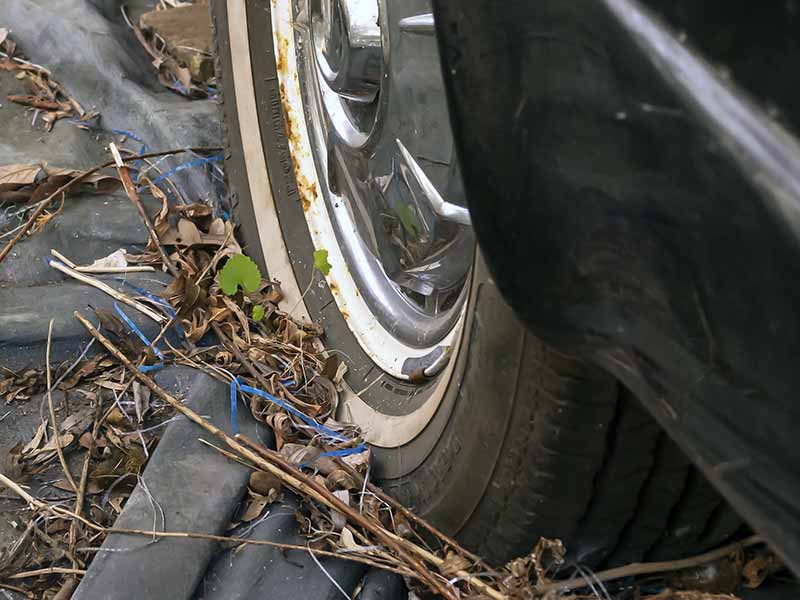Have you ever wondered why, no matter how diligently you care for your vehicle, your tires seem to lose air over time? It’s a frustration many drivers face, leading to unexpected pit stops and constant refills. But there’s more to this common annoyance than meets the eye. Delve into the science and solutions behind tire air loss, and turn this routine hassle into a well-managed aspect of your vehicle’s upkeep.
Why Do Tires Lose Air Over Time?
Tires lose air over time primarily due to permeation, a natural process where air molecules escape through microscopic pores in the tire’s rubber. Environmental factors like temperature changes and physical factors like the vehicle’s weight can also accelerate air loss.
In this article, we’ll unpack the mystery of tire air loss, exploring the science of permeation, how various factors contribute to this phenomenon, and practical steps you can take to manage and minimize air loss, ensuring your tires stay healthy and your vehicle runs efficiently.

Understanding Tire Air Loss
Air loss in tires isn’t just a nuisance; it’s a fact of life for every driver hitting the road. But why do tires, those robust rings of rubber, lose air over time even when they’re just sitting in your garage? Let’s deflate some myths and pump up your knowledge!
The Inevitable Escape: Permeation Explained
Permeation: The Silent Air Thief
- What is Permeation?
- Permeation is the gradual loss of air through the microscopic pores in the tire’s material. It’s like how a balloon slowly loses helium — except, for tires, it’s air seeping through the rubber.
- Why It Happens
- Rubber, while it seems solid and impermeable, actually contains tiny channels that air molecules can wiggle through over time. Factors like temperature fluctuations and tire stress can accelerate this process.
- The Reality of Rubber
- All tire rubber, no matter how well made, will allow some air to pass through. It’s a trade-off of having flexible, durable tires that can handle everything from scorching highways to icy backroads.
The Impact of External Factors
Temperature and time are significant foes to maintaining tire air pressure. As temperatures fluctuate, the air inside the tires expands or contracts, leading to changes in pressure.
Over time, even without any external temperature changes, air naturally and gradually escapes from the tires due to permeation, reducing the air pressure. Both of these factors combine to make maintaining consistent tire pressure a challenge, necessitating regular checks and adjustments.
- The Clock is Ticking
- Even without driving, as days turn into weeks, air molecules continue their slow march out of the tire. It’s a gradual process but noticeable over time.
- Temperature’s Role
- Just like a hot day can make a basketball feel tighter, or a cold one can make it seem flat, temperature swings cause air inside tires to expand and contract, leading to apparent loss.
Keeping Your Tires Inflated
While it might seem like a tire’s destiny is to slowly deflate, there’s much you can do to keep them rolling efficiently for longer. Regular checks are the key. Knowing how often you should check your tire pressure and doing so can mitigate the natural loss from permeation. Plus, you’ll ensure you’re riding on tires that are safe, efficient, and primed for longevity.

The Science of Permeation (Osmosis)
Diving deeper into the world of tire air loss, we’re spotlighting the main culprit: permeation. It’s a term that might sound like it belongs in a science lab, but understanding it can make a world of difference for your daily drive.
The Microscopic Journey of Air Molecules
Taking a closer look at permeation reveals it as the gradual but relentless process where air molecules seep through the microscopic pores of the tire’s rubber compound.
Despite appearing solid and impenetrable, tire rubber contains tiny channels through which air can escape over time, a natural characteristic of the material. This process is ongoing, affecting all tires to varying degrees based on their composition and the environmental conditions they are exposed to, making it a central factor in the gradual loss of tire pressure.
- Tiny Paths, Big Impact
- Imagine air molecules as tiny adventurers trekking through the vast rubber wilderness. They move through microscopic paths within the tire’s material, a journey facilitated by the rubber’s natural characteristics.
- Why All Tires Are Susceptible
- No tire is immune to permeation. It’s a characteristic of the rubber itself, influenced by the tire’s composition, age, and the environmental conditions it’s exposed to.
Factors That Accelerate Air Loss
While permeation is a slow and steady process, certain factors can put the pedal to the metal on air loss. Let’s explore what speeds up this escape and what it means for your tires.
Temperature: The Swell and Shrink Effect
- Heat It Up
- Higher temperatures can cause the air inside tires to expand, increasing pressure. While the tire might initially seem fine, this expansion can actually speed up permeation.
- Cool It Down
- Conversely, cold temperatures make the air contract. This not only reduces pressure but can make the rubber stiffer and potentially more prone to faster permeation.
Physical Stress and Wear
- The Daily Grind
- Regular driving puts stress on tires, flexing those microscopic pathways wider and allowing air to escape more readily.
- Wear and Tear
- As tires age and tread wears down, they can become more susceptible to air loss. Keeping an eye on tire condition is key.
Slowing Down Permeation
While you can’t stop the natural process of permeation, you can definitely slow it down. Regular maintenance, understanding your recommended tire pressure, and adjusting for environmental changes can all make a significant difference.
Best Practices to Prolong Tire Life
- Routine Checks
- Knowing and maintaining the right pressure is crucial. A monthly check is a good baseline, but adjust your schedule according to your driving habits and climate.
- Environment Adjustments
- Be aware of temperature changes, especially with the seasons. Adjusting your tire pressure in summer and winter can help mitigate the effects of temperature on permeation.

Maintaining Recommended Tire Pressure
Now that we understand the stealthy escape artist that is permeation, let’s zoom in on the heart of tire health: maintaining recommended tire pressure. It’s not just about avoiding the inconvenience of a flat tire; it’s about ensuring your ride is safe, efficient, and as smooth as possible.
Why Correct Tire Pressure Matters
Safety, Efficiency, and Beyond
- Safety First
- Properly inflated tires are crucial for safe handling and braking. Incorrect pressure can lead to poor traction, increased stopping distances, and even tire failure.
- Fuel Efficiency
- Tires at the right pressure reduce rolling resistance, meaning your car doesn’t have to work as hard (or use as much fuel) to move forward.
- Tire Longevity
- Keeping the correct pressure reduces uneven wear and tear, extending the life of your tires and saving you money in the long run.
Understanding Your Vehicle’s Recommended Tire Pressure
Each vehicle has its own ideal tire pressure, often differing for front and rear tires. It’s not a one-size-fits-all scenario, and here’s how you can stay informed:
Locating the Right PSI
- Vehicle’s Manual
- The first and most accurate source is your vehicle’s owner manual. It provides the precise pressure suited for your make and model.
- Tire Information Placard
- Typically found on the driver’s side doorjamb or glove box, this sticker tells you the recommended pressure for your vehicle’s original tires.
Adjusting for Load and Conditions
- Consider the Load
- Carrying extra passengers or heavy cargo? Check if your vehicle recommends adjusting tire pressure to accommodate the extra weight.
- Driving Conditions
- Planning a high-speed journey or tackling rough terrain? Your tire pressure needs might vary slightly. Consult your manual or a professional for advice.

Craftsman Portable Air Compressor
Frequency of Tire Pressure Checks
Keeping your tires properly inflated is not a set-it-and-forget-it deal. Regular pressure checks are essential to navigate the ever-changing conditions that affect tire pressure. This section will guide you through the when and how often of tire pressure checks, ensuring you stay on top of this crucial aspect of tire maintenance.
How Often Should You Check Your Tires?
Just as you might start your day with a morning coffee, incorporating tire pressure checks into your routine can become a regular and essential habit. Monthly checks ensure that your tires maintain the optimal pressure, safeguarding against the gradual loss that occurs naturally over time.
- Monthly Checks
- At a minimum, check your tire pressure once a month. It’s a small time investment that pays off in safety, efficiency, and tire longevity.
- Before Long Trips
- Heading out on a road trip or a long drive? Give your tires a quick check before you depart. Changes in load, speed, and temperature on your journey can affect pressure.
- With Seasonal Changes
- Temperature swings between seasons can significantly impact your tire pressure. An adjustment in spring and fall can keep you rolling smoothly.
The Best Times to Check
Timing is everything when it comes to checking your tire pressure. Here’s how to get the most accurate reading:
Cool Tires for Accurate Measures
- Morning Checks
- Check your tire pressure in the morning or after the car has been sitting for a few hours. This gives you a “cold” pressure reading, the most accurate reflection of your tires’ needs.
- Post-Drive Wait
- If you need to check after driving, wait at least three hours to allow the tires to cool down, returning to a more accurate pressure state.
Tools and Tips for Effective Checking
Having the right tools and know-how is crucial for effective tire pressure maintenance. Here’s what you need to keep on top of it:
Essential Tools
- Quality Tire Gauge
- Invest in a reliable tire gauge. Digital or dial, the key is accuracy and ease of use. Learn more about selecting and using the right tool by understanding how to check your tire pressure.
- Air Compressor Access
- Know where to find air when you need it. Many gas stations offer air pumps, or you might consider purchasing a portable air compressor for home use.
Tips for Consistency
- Set Reminders
- Life gets busy, and tire checks can slip through the cracks. Set a monthly reminder on your phone or calendar to keep it top of mind.
- Keep Records
- Track your checks and adjustments in a logbook or app. Noting the changes can help you spot patterns and address issues early.
Nitrogen vs. Air in Tires
In the quest for maintaining perfect tire pressure, you might have come across the debate of filling tires with nitrogen instead of air. This section will explore the differences between nitrogen and air in tires, the benefits and drawbacks of each, and what you should consider when making your choice.
The Basics: Air and Nitrogen in Tires
- Air Composition:
- Regular air is about 78% nitrogen, 21% oxygen, and 1% other gases. It’s readily available and free or inexpensive at most service stations.
- Nitrogen Purity:
- Nitrogen used in tires is typically around 93-99% pure. This higher purity level is what gives it different characteristics and benefits when used in tires.
The Benefits of Nitrogen
Understanding why some choose nitrogen over air can help you make an informed decision for your vehicle.
Reduced Permeation
- Slower Pressure Loss:
- Nitrogen molecules are larger than oxygen, which means they permeate through the tire walls more slowly, leading to a slower rate of pressure loss.
Stability in Various Temperatures
- Consistent Pressure:
- Nitrogen is less reactive to temperature changes, maintaining more consistent tire pressure in different weather conditions.
Moisture Reduction
- Dry Gas:
- Nitrogen is a dry gas and reduces the moisture inside tires, which can be beneficial for the tire and wheel components, especially in changing temperatures.
Resources
Below are some links you may find helpful when learning about tires:
- Should you use nitrogen in your car tires? – Consumer Reports
- Why tires lose air, even with no visible punctures – Tires Easy
Final Thoughts
Understanding why tires lose air and how to effectively manage it is crucial for any driver looking to maintain vehicle efficiency and safety.
By grasping the concept of permeation, recognizing the impact of environmental and physical factors, and adopting a routine of regular checks and maintenance, you can ensure your tires remain in prime condition.
Good luck and happy motoring.





